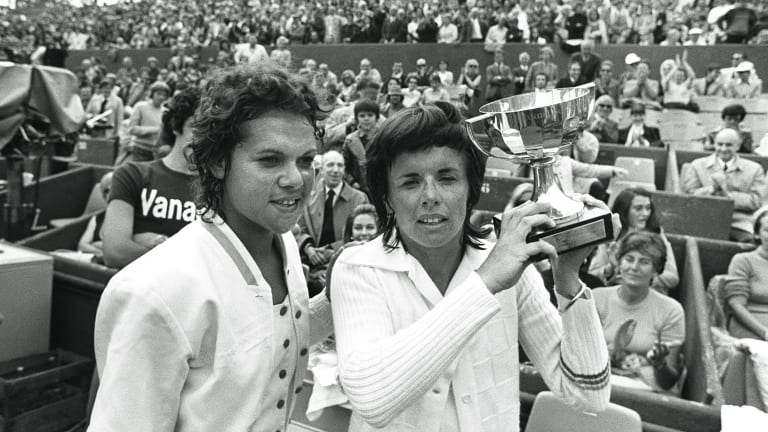Today we begin a two-part look back at Billie Jean King's one and only Roland Garros title—won 50 years ago, in 1972, and which completed a career Grand Slam for the American. (The above photo shows King holding the trophy alongside runner-up Evonne Goolagaong.) Earned on the terre battue in Paris, it was BJK's training on California hard courts that helped pave her eventual path to the championship. Here's how:
Tennis.com Interview
Billie Jean King’s Battle of Roland Garros was won on the hard courts of Southern California (Part 1 of 2)
By May 19, 2022Tennis.com Interview
Nick Kyrgios brings the show, and new perspective, to Madison Square Garden
By Dec 08, 2025Tennis.com Interview
After longest off-season ever, Tommy Paul talks injury comeback, wedding plans at MSG
By Dec 08, 2025Tennis.com Interview
Following in family footsteps, Elli Mandlik clinches Australian Open return in wild card play-off
By Nov 25, 2025Tennis.com Interview
Ben Johnson 101: How an Instagram auteur is defining modern tennis lifestyle
By Nov 11, 2025Tennis.com Interview
Patrick Kypson, former college teammate of Rinderknech and Vacherot, is writing his own perseverance story
By Oct 28, 2025Tennis.com Interview
Michael Zheng channels Ivy League balancing act into rapidly blossoming pro tennis future
By Oct 21, 2025Tennis.com Interview
Flavio Cobolli wants to earn Davis Cup Finals nomination—and stay on as ATP's 'admin'
By Oct 16, 2025Tennis.com Interview
With IMG Academy backing, Wakana Sonobe kicks off pro career at home in Osaka
By Oct 16, 2025Tennis.com Interview
Alex Michelsen wins Almaty debut to end losing skid, reveals coaching trial with Kristof Vliegen
By Oct 15, 2025Billie Jean King’s Battle of Roland Garros was won on the hard courts of Southern California (Part 1 of 2)
Having learned tennis on California hard courts, King’s attacking game was a natural fit for the other three majors, then all played on slick grass. But clay? “California kids were the laughing stock on clay,” says King.
Published May 19, 2022

© AFP via Getty Images
Advertising
Advertising
Advertising

“I hadn’t really given the time and attention to the French,” King said. That changed during her 1972 run to the title.
© AFP via Getty Images